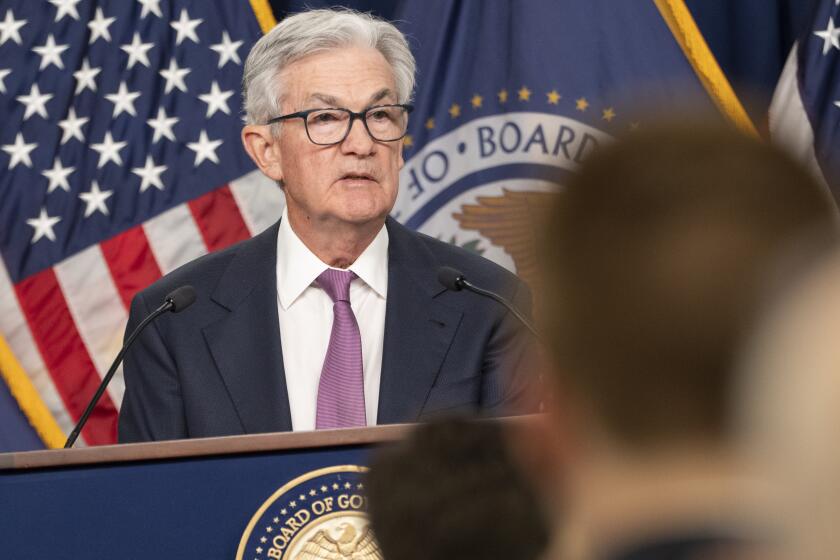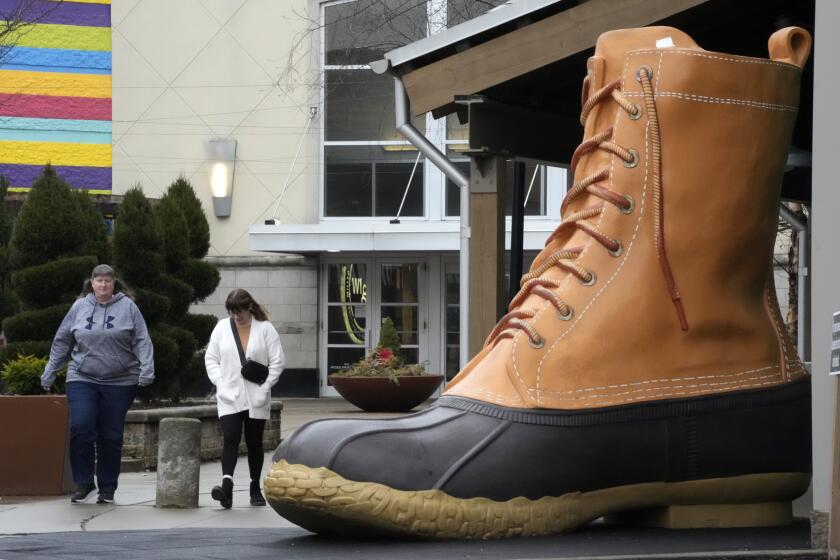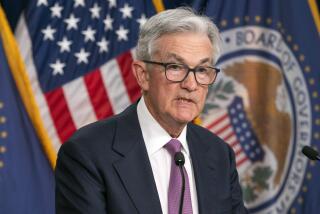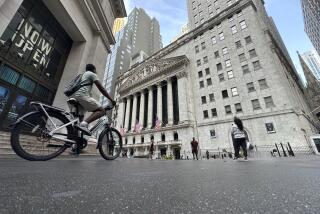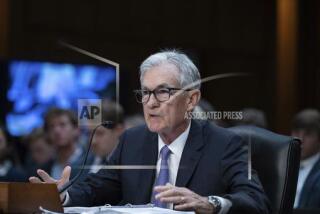Fed Chair Jerome Powell: Rate hikes could accelerate if economy stays strong
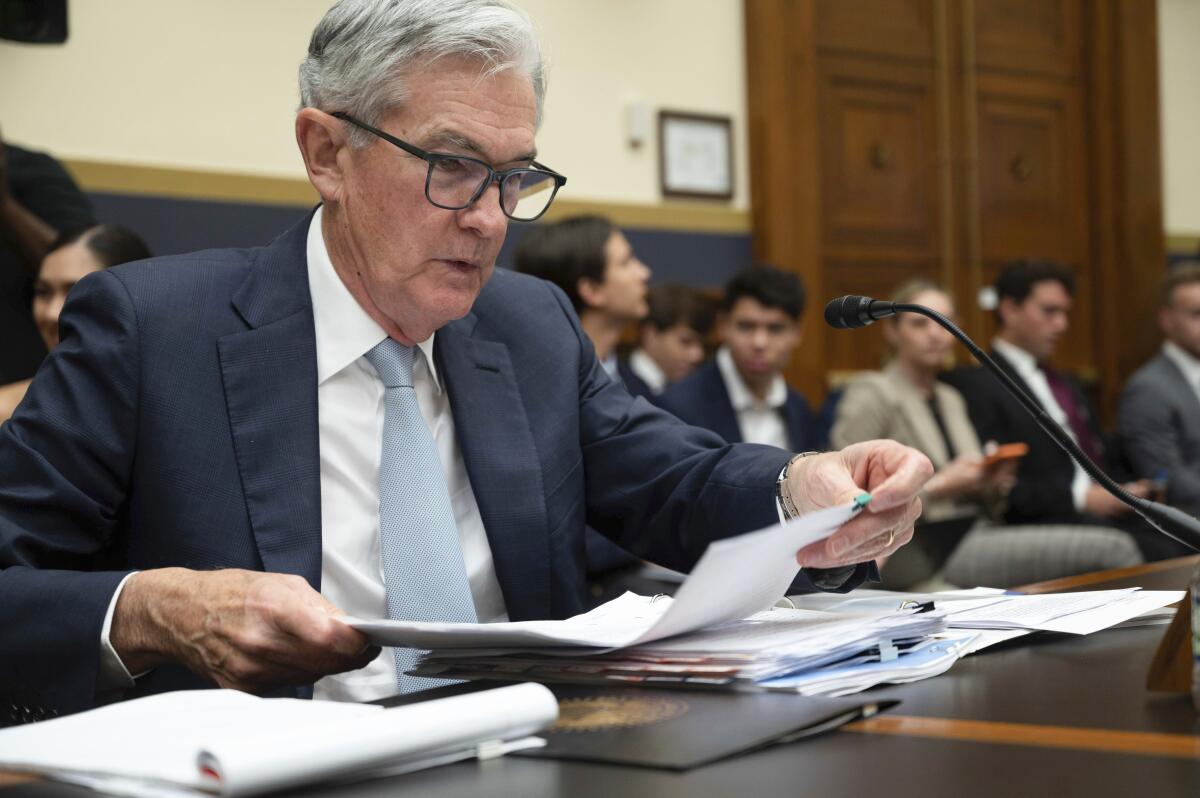
The Federal Reserve could increase the size of its interest rate hikes and raise borrowing costs to higher levels than previously projected if evidence continues to point to a robust economy and persistently high inflation, Chair Jerome Powell said Tuesday in prepared testimony to a Senate panel.
“The latest economic data have come in stronger than expected, which suggests that the ultimate level of interest rates is likely to be higher than previously anticipated,” Powell said in the testimony to the Senate Banking Committee. “If the totality of the data were to indicate that faster tightening is warranted, we would be prepared to increase the pace of rate hikes.”
Powell’s comments raise the possibility that the Fed will increase its key interest rate by a half-percentage point at its next meeting March 21-22, after having carried out a quarter-point hike in early February. The Fed previously raised its benchmark rate by a half-point in December and imposed four three-quarter-point hikes before that. Over the last year, the central bank has raised its key rate, which affects many consumer and business loans, eight times.
Most economists and Wall Street investors had expected the Fed to carry out another quarter-point increase at upcoming meetings. But in recent days, traders have been pricing in a greater likelihood of a half-point hike, according to futures markets.
Nearly all Fed policymakers agreed this month to slow the pace of interest rate increases to a quarter-point, with ‘a few’ supporting a larger hike.
In his prepared remarks Tuesday, Powell walked back some of the optimistic comments about declining inflation he had made after the Fed’s Feb. 1 meeting, when he noted that “the disinflationary process has started” and he referred to “disinflation” — a broad and steady slowdown in inflation — multiple times. At that time, year-over-year consumer price growth had slowed for six straight months.
But after that meeting, the latest reading of the Fed’s preferred inflation measure showed that consumer prices rose from December to January by the most in seven months. And reports on hiring, consumer spending and the broader economy have also indicated that growth remains healthy.
Such economic figures, Powell said Tuesday, “have partly reversed the softening trends that we had seen in the data just a month ago.”
The Fed chair acknowledged that inflation “has been moderating in recent months” but added that “the process of getting inflation back down to 2% has a long way to go and is likely to be bumpy.”
Several Fed officials said last week that they would favor raising the Fed’s key rate above the 5.1% level they had projected in December if growth and inflation stay elevated. When the Fed raises its key rate, it typically makes mortgages, auto loans, credit card rates and business lending more expensive. It’s a trend that can slow spending and inflation but also risks sending the economy into a recession.
America’s consumers rebounded last month from a weak holiday shopping season by boosting their spending at stores and restaurants at the fastest pace in almost two years.
Inflation, as measured year over year, has slowed from its peak in June of 9.1% to 6.4%. But its progress stalled in January.
Powell has noted that so far, most of the slowdown in inflation reflects an unraveling of supply chains that have allowed more furniture, clothes, semiconductors and other physical goods to reach U.S. shores. By contrast, inflation pressures remain entrenched in numerous areas of the economy’s vast service sector.
Rental and housing costs, for example, remain a significant driver of inflation. At the same time, the cost of a new apartment lease is growing much more slowly, a trend that should reduce housing inflation by mid-year, Powell has said.
But the prices of many services — from dining out to hotel rooms to haircuts — are still rising rapidly, with little sign that the Fed’s rate hikes are having an effect. Fed officials say the costs of those services mainly reflect rising wages and salaries, which companies often pass on to their customers in the form of higher prices.
As a result, the Fed’s monetary policy report to Congress, which it publishes in conjunction with the chair’s testimony, said that quelling inflation will likely require “softer labor market conditions” — a euphemism for fewer job openings and more layoffs.
More to Read
Inside the business of entertainment
The Wide Shot brings you news, analysis and insights on everything from streaming wars to production — and what it all means for the future.
You may occasionally receive promotional content from the Los Angeles Times.
